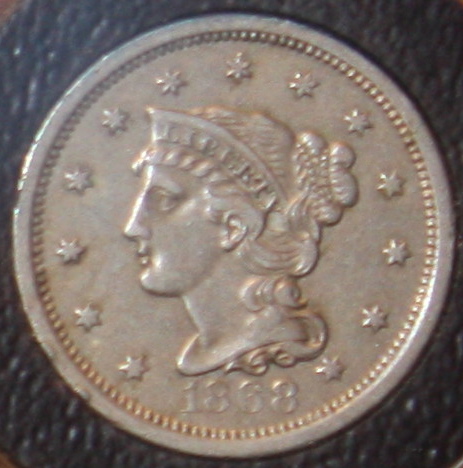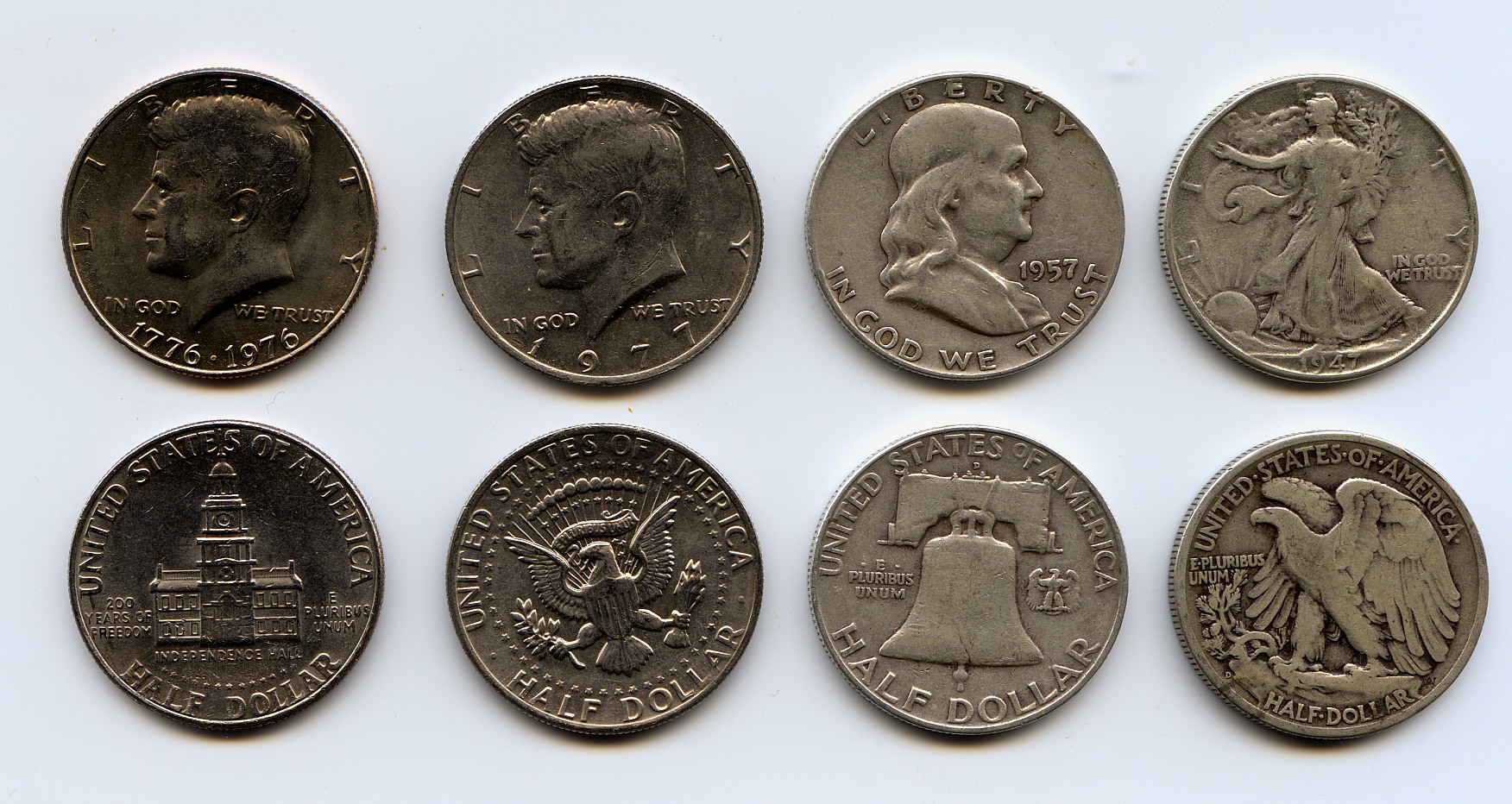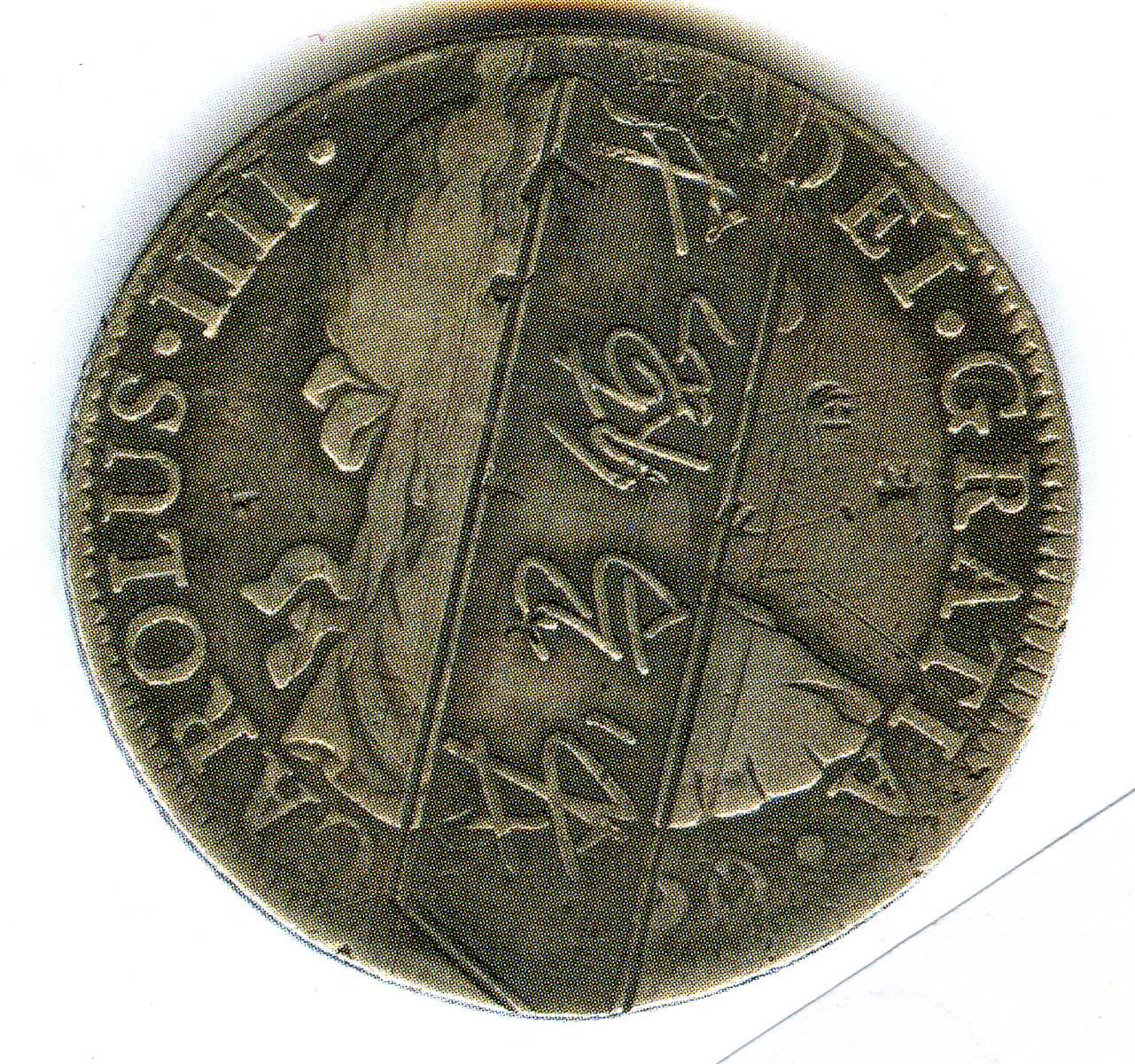|
1814 Platinum Half Dollar
The 1814 platinum half dollar (J-44) was a United States pattern coin with a face value of fifty cents. Its design was identical to the Capped Bust The Capped Bust coinage of the United States consisted of a half dime, dime, quarter and half dollar. History John Reich designed this capped-head concept of Liberty, and it was modified by Chief Engraver of the Mint, William Kneass William Kne ... half dollar, but struck in platinum. A unique example with 33 "P" punch marks has been given the catalog number J-44a. It has been described as "one of the most intriguing - and mysterious - pattern coins ever produced by the United States." There are two examples known without the punch marks. See also * Platinum coin References {{reflist Fifty-cent coins of the United States Platinum coins 1814 in the United States Eagles on coins Goddess of Liberty on coins ... [...More Info...] [...Related Items...] OR: [Wikipedia] [Google] [Baidu] |
Coins Of The United States Dollar
Coins of the United States dollar (aside from those of the earlier Continental currency) were first minted in 1792. New coins have been produced annually and they make up a valuable aspect of the United States United States currency, currency system. Today, circulating coins exist in denominations of 1¢ (i.e. 1 cent (currency), cent or $0.01), 5¢, 10¢, 25¢, 50¢, and $1.00. Also minted are Bullion coin, bullion (including gold coin, gold, silver coin, silver and platinum coin, platinum) and Commemorative coin, commemorative coins. All of these are produced by the United States Mint. The coins are then sold to Federal Reserve Banks which in turn are responsible for putting coins into circulation and withdrawing them as demanded by the country's economy. Current coinage Today, four mints operate in the United States producing United States Mint coin production, billions of coins each year. The main mint is the Philadelphia Mint, which produces circulating coinage, mint sets and s ... [...More Info...] [...Related Items...] OR: [Wikipedia] [Google] [Baidu] |
Pattern Coin
A pattern coin is a coin which has not been approved for release, but produced to evaluate a proposed coin design. They are often off-metal strike (using metals of lower value to test out the dies), to proof standard or piedforts. Many coin collectors collect and study pattern coins because of their historical importance. Many of the world's most valuable coins are pattern coins; nearly 25 of the pieces listed in ''100 Greatest US Coins'' are pattern coins. English patterns The first English coin that can be identified with certainty is a groat, originally worth fourpence. This piece, an example of which was illustrated and sold in the Dodsley Cuff sale of the mid-19th century, had crowns in place of the usual three pellets in each quarter of the reverse. Patterns are particularly identifiable and exist in larger numbers from the reign of Elizabeth I onwards. The experimental base metal issues of all coinage prior to the mid-18th century have been well preserved. Boulton's ... [...More Info...] [...Related Items...] OR: [Wikipedia] [Google] [Baidu] |
United States Dollar
The United States dollar (symbol: $; code: USD; also abbreviated US$ or U.S. Dollar, to distinguish it from other dollar-denominated currencies; referred to as the dollar, U.S. dollar, American dollar, or colloquially buck) is the official currency of the United States and several other countries. The Coinage Act of 1792 introduced the U.S. dollar at par with the Spanish silver dollar, divided it into 100 cents, and authorized the minting of coins denominated in dollars and cents. U.S. banknotes are issued in the form of Federal Reserve Notes, popularly called greenbacks due to their predominantly green color. The monetary policy of the United States is conducted by the Federal Reserve System, which acts as the nation's central bank. The U.S. dollar was originally defined under a bimetallic standard of (0.7735 troy ounces) fine silver or, from 1837, fine gold, or $20.67 per troy ounce. The Gold Standard Act of 1900 linked the dollar solely to gold. From 1934, its ... [...More Info...] [...Related Items...] OR: [Wikipedia] [Google] [Baidu] |
Capped Bust
The Capped Bust coinage of the United States consisted of a half dime, dime, quarter and half dollar. History John Reich designed this capped-head concept of Liberty Liberty is the ability to do as one pleases, or a right or immunity enjoyed by prescription or by grant (i.e. privilege). It is a synonym for the word freedom. In modern politics, liberty is understood as the state of being free within society fr ..., and it was modified by Chief Engraver of the Mint, William Kneass. It proved to be a popular design and lasted from 1807 to 1839 on the half dollar, 1815 to 1838 on the quarter, 1809 to 1837 on the dime, and 1829 to 1837 on the half dime. All four of these coin were struck in 89.2% silver and 10.8% copper. There was also a gold design created by engraver Robert Scot created in 1795, also called the Capped Bust, although it is more popularly known as the " Turban Head" because of its unusual, exotic appearance. The Turban design was used on the gold Quarter Eagle, ... [...More Info...] [...Related Items...] OR: [Wikipedia] [Google] [Baidu] |
Half Dollar (United States Coin)
The half dollar, sometimes referred to as the half for short or 50-cent piece, is a United States coin worth 50 cents, or one half of a dollar. It is the largest United States circulating coin currently produced in both size and weight, being in diameter and in thickness, and is twice the weight of the quarter. The coin's design has undergone a number of changes throughout its history. Since 1964, the half dollar depicts the profile of President John F. Kennedy on the obverse and the Seal of the President of the United States on the reverse. Though not commonly used today, half-dollar coins have a long history of heavy use alongside other denominations of coinage, but have faded out of general circulation for many reasons. They were produced in fairly large quantities until the year 2002, when the U.S. Mint ceased production of the coin for general circulation. As a result of its decreasing usage, many pre-2002 half dollars remain in Federal Reserve vaults, prompting the cha ... [...More Info...] [...Related Items...] OR: [Wikipedia] [Google] [Baidu] |
Platinum
Platinum is a chemical element with the symbol Pt and atomic number 78. It is a dense, malleable, ductile, highly unreactive, precious, silverish-white transition metal. Its name originates from Spanish , a diminutive of "silver". Platinum is a member of the platinum group of elements and group 10 of the periodic table of elements. It has six naturally occurring isotopes. It is one of the rarer elements in Earth's crust, with an average abundance of approximately 5 μg/kg. It occurs in some nickel and copper ores along with some native deposits, mostly in South Africa, which accounts for ~80% of the world production. Because of its scarcity in Earth's crust, only a few hundred tonnes are produced annually, and given its important uses, it is highly valuable and is a major precious metal commodity. Platinum is one of the least reactive metals. It has remarkable resistance to corrosion, even at high temperatures, and is therefore considered a noble metal. ... [...More Info...] [...Related Items...] OR: [Wikipedia] [Google] [Baidu] |
CoinWeek
''CoinWeek'' is an American internet-based publication that publishes articles, analysis, news, videos and podcasts about a wide range of numismatic topics. It is one of the leading online publications for coin collectors in the North American market, winning more than two-dozen Numismatic Literary Guild (NLG) Awards since its launch in 2011. Founding and early history (2010–2014) Work began on ''CoinWeek'' in 2010 as an evolution of the website ''CoinLink'', founded by Scott Purvis in 1995. ''CoinLink'' was one of the Internet's first numismatic resources that connected coin dealers to collectors, presenting collectors with lists and profiles of many of the rare coin industry's leading dealers. As the site evolved, it began to aggregate press releases and news articles from the industry's leading companies and offer collectors original news and editorial content—such as articles by numismatic blogger Greg Reynolds, among others. In 2009, Purvis conceptualized a new website ... [...More Info...] [...Related Items...] OR: [Wikipedia] [Google] [Baidu] |
Punch Mark
A countermarked, punchmarked or counterstamped coin is a coin that has had some additional mark or symbol punched into it at some point after it was originally produced while in circulation. This practice is now obsolete. Countermarking can be done for a variety of reasons. If the currency is reformed, existing coins may be rendered void. In this situation, coins already in circulation could be marked with the new value (according to the new currency system). The life span of existing coins could thus be extended, which might under some circumstances be a cheaper alternative to recalling the coins, melting them and striking replacements. Similarly, foreign coins could be marked as legal or accepted currency, thus allowing them to circulate in the area where they were countermarked. Countermarking can also be done for political reasons, i.e. a new state or régime demonstrating its authority by countermarking coins issued by the previous state. Some experts recommend not to use ... [...More Info...] [...Related Items...] OR: [Wikipedia] [Google] [Baidu] |
Professional Coin Grading Service
Professional Coin Grading Service (PCGS) is an American third-party coin grading, authentication, attribution, and encapsulation service founded in 1985. The intent of its seven founding dealers, including the firm's former president David Hall, was to standardize grading.Laibstain, Harry. ''Investing, collecting & trading in certified commemoratives: an in-depth analysis of gold & silver issues 1892-1954''. DLRC Press, 1995, p. 1-134. The firm has divisions in Europe and Asia, and is owned by parent company Collectors Universe. PCGS has graded over 42.5 million coins, medals, and tokens valued at over $36 billion. History PCGS was founded in 1985 by seven dealers, including the firm's former president, David Hall. The founders' intent was to establish definitive grading standards, backed by a guarantee of grading accuracy. PCGS began operations on February 3, 1986. The firm has since started grading foreign coins and established divisions in Europe and Asia, and was purchased ... [...More Info...] [...Related Items...] OR: [Wikipedia] [Google] [Baidu] |
Platinum Coin
Platinum coins are a form of currency. Platinum has an international currency symbol under ISO 4217 of XPT. The issues of legitimate platinum coins were initiated by Spain in Spanish-colonized America in the 18th century and continued by the Russian Empire in the 19th century. As a form of currency, these coins proved to be impractical: platinum resembles many less expensive metals, and, unlike the more malleable and ductile silver and gold, it is very difficult to work. Several commemorative coin sets have been issued starting from 1978 and became popular among coin collectors. The major platinum bullion coins include the American Platinum Eagle, the Canadian Platinum Maple Leaf, the Australian Platinum Koala, the Isle of Man Noble, the Chinese Platinum Panda, the Austrian Vienna Philharmonic and several series by the Soviet Union and later by the Russian Federation. History Platinum was first used for minting coins in Spanish-colonized America. Following the discovery of plat ... [...More Info...] [...Related Items...] OR: [Wikipedia] [Google] [Baidu] |
Fifty-cent Coins Of The United States
50 cents is a Coin, coinage value in many systems using Decimalisation, decimal currencies. Examples include: * Australian fifty-cent coin * 50-cent piece (Canadian coin) * 50 euro cent coin * Half dollar (United States coin) * Half guilder coin (Netherlands) * Hong Kong fifty-cent coin See also *50 Cent (other) {{SIA ... [...More Info...] [...Related Items...] OR: [Wikipedia] [Google] [Baidu] |







